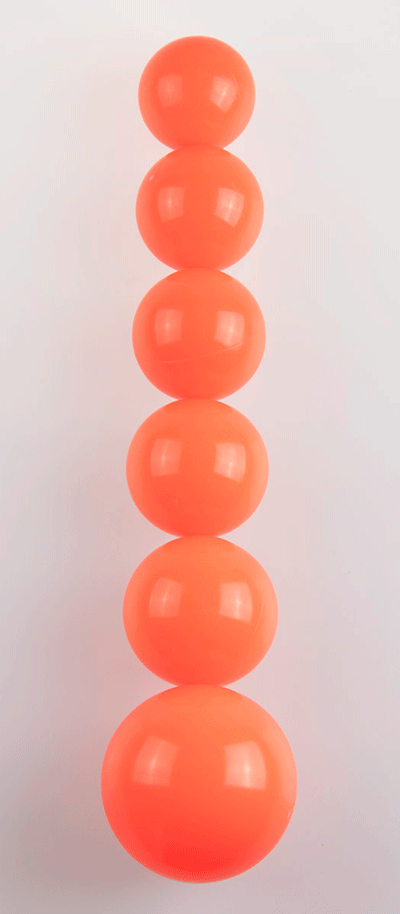Juggling balls come in various sizes. Jugglers select the correct size based on the number of balls they plan to juggle and the dimension of their hands. Most juggling balls are made in metric sizes. This adds some complexity in making the right choice, since we are more accustomed to measurements in inches rather than millimeters.
Beginning jugglers working with three or four balls need to be able to easily hold two balls in one hand, and the third ball (and maybe a fourth) in the other. To start the juggling pattern with three balls, you must be able to grip the first ball you are going to throw with two fingers and your thumb. The diagrams above show proper sizes based on a hand’s dimensions. As you can see from the balls size graphic, bigger hands can hold a much larger ball.
Intermediate jugglers who want to juggle five balls need to be able to hold three in each hand. Size now becomes more important as your hand can quickly run out of room when holding three balls. The chart shows a comfortable size for three balls in one hand. When you have three balls in one hand you control the first throw with your middle finger and ring finger. You can no longer use your thumb, as you did in a three ball start.
Advanced jugglers usually already know what sizes they like for how many balls they are going to juggle. When juggling more than five balls, you can use several techniques for the start. Some jugglers make a pyramid of balls in their hand, with three on the bottom and the fourth ball on top. Other jugglers prefer to hold all four balls flat in one hand. The pyramid start allows you to use a large-size ball than the flat start. If you are buying balls as a gift, take note of how your juggler starts his/her juggling pattern.
Factors in Picking a Ball size
- size of your hand
- juggling pattern room
- ease of catching the ball
- how soft the ball is to grip
- ball visibility when juggling for a audience
- juggling ball weight and your body size
- juggling balls sets for different uses
How to Measure your hand size

The most important factor in picking the correct size of juggling ball is knowing the size of your hand. Take a measurement from the tip of your index finger to the bottom of your palm, just about your wrist. The ball sizing chart is based on this measurement. I am using my hand as an example in all the photographs, which measures 7.5 inches.
Juggling Ball Sizing Chart

From the juggling balls size chart you can see we recommend 65mm for a 7.5 inch hand. This is a very comfortable size for juggling from 3-5 balls. However I can also hold 70 mm, 75mm and 80mm balls in my hand. You can see in the photographs how big these sized balls are in my 7.5 inch hand.
While I can juggle with all these sizes, it becomes more and more difficult to make a accurate first throw with the larger balls size. To make a accurate first throw, it is best to control the ball with your index finger and ring finger. If the ball is too larger they are out of reach of any two fingers so it is harder to make an accurate first throw. It is not impossible, just harder.


Share:
How to Choose a Russian Juggling Ball